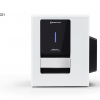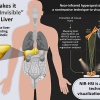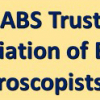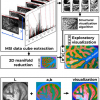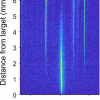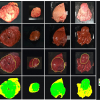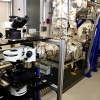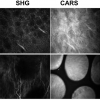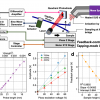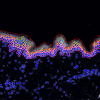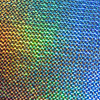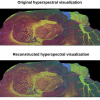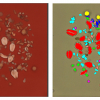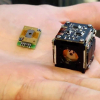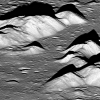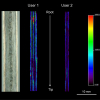Imaging News
Shimadzu has received two “Red Dot” design awards for their MALDImini-1 and iMScope QT, a MS and optical imaging instrument.
A highly efficient way to collect infrared microscopy data avoids the use of slow, grid-based raster scans.
NIR-HSI is non-invasive and can be used to quantify fat content in liver aiding medical research and the diagnosis of liver diseases.
Applications are invited for two awards administered by the ABS Trust.
Inspired by the eyes of mantis shrimp, researchers have developed a new kind of optical sensor that is small enough to fit on a smartphone but is capable of hyperspectral and polarimetric imaging.
Scientists from the Skolkovo Institute of Science and Technology (Skoltech) have proposed a mass spectrometry imaging (MSI) method making use of the unique features of human vision.
A new study reports an optimised approach to using laser-induced breakdown spectroscopy for analysing hydrogen isotopes. The new findings could enable improved rapid identification and measurement of hydrogen and other light isotopes that are important in nuclear reactor materials and other applications.
Near infrared hyperspectral imaging combined with machine learning can differentiate cancerous and normal tissue in tumours in deep tissue and covered by a mucosal layer.
A major advance in brain tumour diagnosis made by a research team from UK institutions using infrared spectroscopy at Diamond is highlighted in a short video.
An EU research project, CARMEN, aims to develop a multimodal imaging system capable of detecting cancerous cells during surgery.
Camo Analytics, producer of the Unscrambler chemometrics software, has been acquired by Aspen Technology, Inc.
Researchers from Osaka University have developed a new MSI method for brain tissue analysis in high spatial resolution that requires no sample preparation.
Multimodal imaging is being used by scientists to study skin ageing through the interaction of metabolism, cellular communication and cellular quality control in skin ageing accelerated by environmental stress.
Strong investment in photonics will help us fight infectious diseases that kill an unimaginable number of people and prepare us against future pandemics, says Dr Jürgen Popp of the Leibniz Center for Photonics in Infection Research (LPI) that is currently under construction in Jena.
A new computational mass spectrometry imaging method enables researchers to achieve high mass resolution and high spatial resolution for biological samples while providing data sets significantly faster.
Mean accuracy can be improved by at least 25 % by modifying the combination of the aspects of the system.
Konica Minolta Sensing Europe BV has entered into a definitive agreement to acquire Specim.
The Smart-HSI project will develop compact hyperspectral imaging solutions to be used in space.
The mineral olivine, thought to be a major component inside all planetary bodies, holds secrets about the early formation of the solar system, and an IR spectral region can be used to study it remotely.
This review discusses three emerging applications in MSI—clinical, pre-clinical and forensics—and the roadblocks to the expansion of the use of MSI in these areas.

